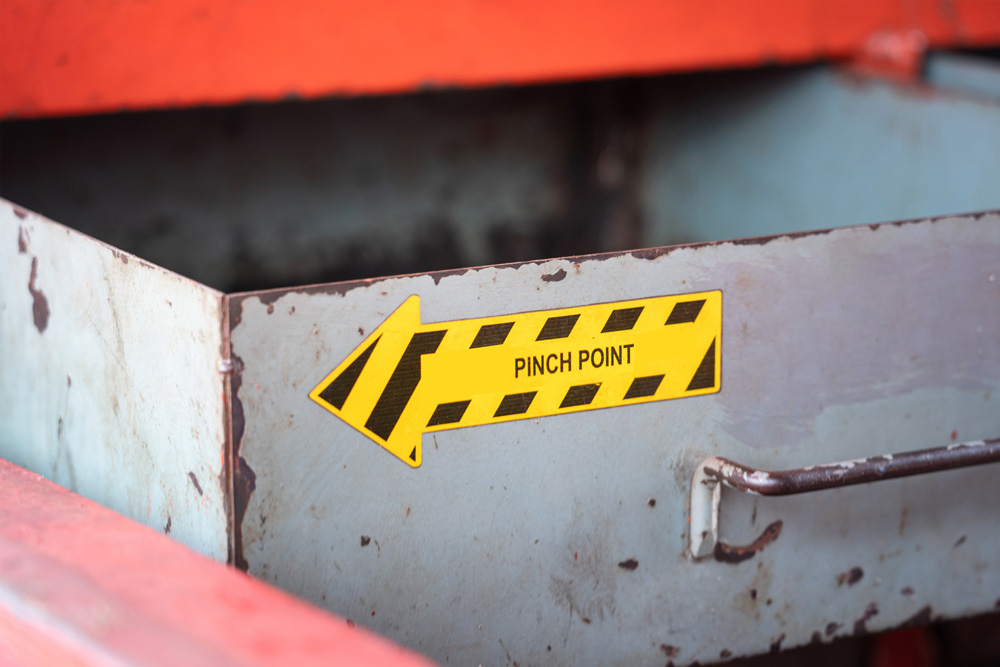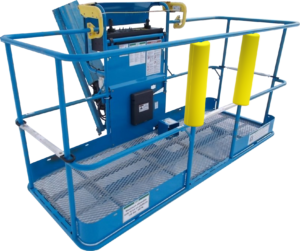Taking the Sting Out of Pinch Points

With such an uncomfortable sounding name, you’d think employees would do everything possible to avoid placing any part of their body into a “pinch point.” Of course, on-the-job accidents don’t always occur as a result of employee error – they also occur when companies fail to have the right safety equipment in place to help protect employees by preventing injuries. From a bumper guard to end caps, at Mantec we create products designed to reduce workplace accidents and keep your employees safe.
The Problem with Pinch Points
A pinch point occurs anytime two objects come into contact and a possibility exists that a person could become caught or injured if a part of their body intersects with the contact that’s made. For example, while working from an AWP, pinch points exist between the guard-rail system and anything solid around the basket. Pinch points often snag the hands and fingers of employees unlucky enough to suffer this type of injury, but a pinch point can harm any part of the body.
Injuries that result due to pinch points range from the minor, blisters and bruises, to the severe, amputation and even death. Loaders, gears, conveyors, compactors, and other types of moving equipment are all examples of different machinery with pinch points.
What Causes Pinch Point Injuries?
Much like any other job related mishap, accidents involving pinch points can occur for a variety of reasons. Some of the most common include:
- Employees failing to monitor the position of their hands and feet while on the job.
- Working or walking in areas with mobile equipment and fixed structures.
- Loose hair, jewelry, or clothing getting caught in the rotating parts of equipment.
- Not enough safety equipment in place to prevent injury.
- The safety equipment is in poor condition.
- Failure to use proper work procedures or tools while on the job.
- Reaching into moving equipment and machinery.
Even when proper procedure and protocol are followed, accidents can occur on the job. For employers, it’s vital to provide the right type of safety equipment so that accidents and injuries are minimized.
What Safety Controls can Help to Minimize Accidents?
Machine guarding offers one of the most reliable and effective solutions for preventing injuries related to pinch points. When designing our Mantec Safety Bumpers, our team looked for a practical solution for eliminating the areas where pinch points could occur. The most effective means of preventing injuries related to pinch points is to simply stop them from ever developing.
With our Mantec Bumper MSI-550-125-2400, we developed a bumper that is 5.50” in diameter and 24”  long. This size dimension allows our bumper to fit on baskets and eliminate pinch point injuries by creating free air space between the basket guard rails and a fixed object.
long. This size dimension allows our bumper to fit on baskets and eliminate pinch point injuries by creating free air space between the basket guard rails and a fixed object.
As you can see in the accompanying image, our Mantec Safety Bumpers fit easily on a basket in areas that don’t cause problems to develop in how the equipment is used or how well it functions. By adding needed cushion to these strategic areas, the team at Mantec has developed a means for eliminating pinch points by preventing them from ever developing.
In addition to machine guarding, other effective means of reducing injury as a result of pinch points include:
- Pre-work inspection. This can identify the potential areas a pinch point could develop, and give employees the information needed to avoid them.
- Lockout/tagout. Employees should also make sure mobile equipment is securely powered down before beginning any maintenance work.
- Staying alert while on the job site. Many accidents occur early in the morning and right after lunch when employees are most often to feel tired and sluggish.
- Employees should remain in designated areas. By wandering or working in other areas, accidents can occur unless equipment operators always know an employee’s location.
Don’t let employee injury impact your bottom line. Contact the team at Mantec to find out more about how our bumper guard and end caps can help to better protect your workforce and your equipment.
